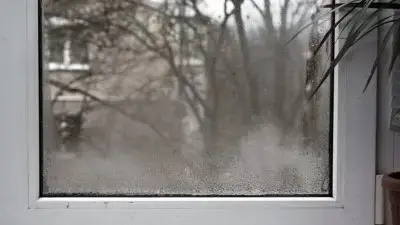The topic of air pollution blew through the headlines in 2020 when the global pandemic put many cities and countries in a lockdown. When flights were grounded and cars remained at home, the polluted skies around the world began to clear and many took notice. People in India even saw the Himalayan mountains for the first time in decades, from 100 miles away, due to the reduced pollution in the sky. While heightened talk swirled regarding reduced energy consumption during that time, air pollution is not a new challenge and goes back further than you might think!
Many historians say that humans started causing (and complaining about) air pollution thousands of years ago! Then when the Industrial Revolution came along, new sources of air pollution were brought to the table and the effects continued to be felt around the world. This led to an environmental movement in the 60s and 70s and the creation of events like Earth Day (1970) and legislative successes like the Clean Air Act of 1963 (which still makes a huge impact today).
In fact, according to the American Lung Association (ALA), “cutting air pollution through the Clean Air Act was projected to prevent over 230,000 deaths and save nearly $2 trillion in 2020 alone.” The EPA states that “between 1970 and 2020, the combined emissions of six common pollutants (PM2.5 and PM10, SO2, NOx, VOCs, CO and Pb) dropped by 78 percent. This progress occurred while U.S. economic indicators remain strong.”
Even with the progress made, today, four out of ten U.S. residents currently live in areas with unhealthy levels of air pollution, according to a 2021 report from the ALA. The World Health Organization (WHO) estimates that 92% of the world’s population lives in communities where local air pollution falls below WHO health standards.
Air pollution affects our health
So, what happens when air pollution is higher than it should be? According to the International Energy Agency (IEA), “air pollution is one of the world’s single biggest environmental risks to human health, with one in nine deaths linked to poor indoor or outdoor air quality.”
According to the National Institute of Environmental Health Sciences (NIH), the International Agency for Research on Cancer of the World Health Organization (WHO) actually classified air pollution as a human carcinogen in 2013. Exposure to an unhealthy air supply has been linked to an increased risk of breast cancer, leukemia, non-Hodgkin’s Lymphoma, lung cancer, respiratory disease, heart problems, and more.
The National Resources Defense Council (NRDC) states that “air pollution is now the world’s fourth-largest risk factor for early death,” and according to the WHO, air pollution is the cause for approximately seven million deaths annually, with 600,000 of those deaths being children.
Indoor air pollution is also a thing
When we hear about air pollution, it’s often regarding the outdoor contaminants that can affect our health, but what about indoors? According to the U.S. Environmental Protection Agency (EPA), U.S. residents spend about 90% of their time indoors where pollutants can be up to 5 times higher than what you would typically find outside.
According to the EPA, common indoor pollutant sources include heating and cooling systems, tobacco products, excess moisture, household cleaning products, fuel-burning combustion appliances, insulation that contains asbestos, newly installed building materials like carpet or flooring, and outdoor pollution that enters the home. (If your home isn’t properly air sealed or insulated, outside air pollutants can enter through gaps, cracks, holes, windows, and doors without invitation.)
To improve your indoor air quality through energy efficiency, consider improvements in air sealing and insulation, keep up with home maintenance like changing your air filter regularly, upgrade your HVAC system, and sign up for a Home Energy Assessment to get completed home safety checks like carbon monoxide testing and an evaluation of your heating and cooling systems, insulation, and air sealing.
The most recent State of Global Air report noted that while 4.5 million deaths in 2019 were connected to exposure to outdoor air pollution, 2.2 million more deaths were related to indoor air pollution.
How to improve air quality
Energy efficiency has everything to do with improving indoor and outdoor air quality. According to the IEA:
- Increasing the use of energy-efficient appliances and lighting reduces the demand for electricity, reducing air pollution
- Mandatory building standards and retrofits that reduce energy consumption can decrease the need for power generation
- Improvements in the efficiency of industrial sites can significantly reduce emissions from fossil fuel-based power generation
- Improvements in transport efficiency can positively impact air pollution and human health
Lower air pollution means less damage to our health and to the health of our ecosystems. So, what will you do to protect your family, neighbors, generations to come, and the future of our planet? Whether you pick up carpooling or cycling to work, make greener choices at home, or use your voice for advocacy, the simplest actions can collectively make a big impact.
Need help with making your home more energy efficient? At HomeWorks Energy, we offer a Home Energy Assessment at no-cost to our Massachusetts neighbors so that you can learn how to save energy and money all year long! Sign up here or call (781) 305-3319 to schedule over the phone.
Want to check the air quality levels for Massachusetts today? Call 1-800-882-1497 for a quick rundown about the air quality in your community.








